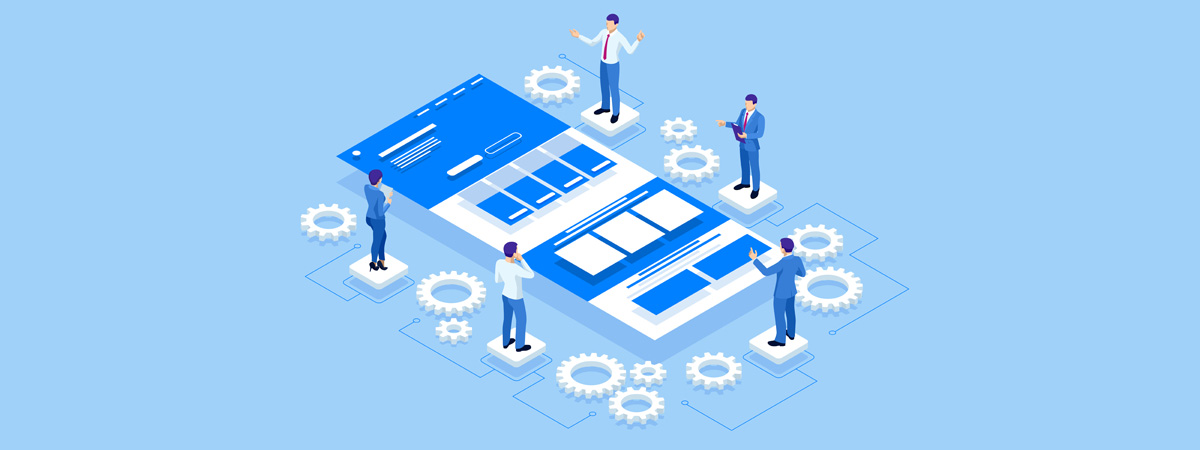Application Migration Services
We love exchanging ideas about application modernization and cloud migration — it’s what we do. Putting those concepts into another bucket, you could also say we love our involvement with application migration services. We actually started with application migration from PCs to internet 1.0, the same concept nearly three decades ago, so we kinda understand this stuff. Technology morphs, paradigms shift, systems grow obsolete, and someone has to deliver continuity. Since application migration services are in our DNA, we wanted to share our roadmap, with a look into the potential benefits and challenges.
A Roadmap for Application Migration
Identify Your Organization’s Pain Points
Are your sales weak? Do you deliver a poor customer experience? Does it take too long for your development team to deliver fixes or new features? Are you vulnerable to system outages or security breaches? Odds are good that your organization has technology challenges. Identify them and prioritize what are the most pressing issues. These pain points drive how you modernize systems and migrate applications.
Set Goals for Your Upgrade
We’re a goal-driven technology company, with metrics being our motivation. As such, we prescribe setting smart, measurable goals for every project. What would success look like? How long does it take? How much is it worth? What metrics should be measured now, during the project, and after completion? Identify pragmatic and stretch goals for your migration project. Note, these are big picture goals that must be refined over the course of your project.
Document Your Requirements
Refine your goals into specific actions. For example, you should map your current environment and applications. Then you can plan for the migration. Should you retain, rehost, replatform, or rearchitect each one? Does it make sense to use public, private, or a hybrid cloud configuration? As you determine your requirements, you’ll probably uncover more pain points. You’ll learn more about what’s been going awry…
Write a Plan with a Gap Analysis
Your requirements frame out what needs to be done, which will feed your plan for how to do all of it. As you prepare your plan and think about a timeline, your team should consider what you don’t have and don’t know. For example, you may need tools to migrate applications and data. In some cases, cloud providers have tools to streamline migrations of systems and data. And in many cases, IT teams are already stretched trying to keep systems alive, so migration means more work. That may necessitate finding a full-service migration partner (Hi, we’re Webapper Cloud Software Engineers…we provide application migration services). A good plan will map requirements to actions to resources, whether in-house or missing.
Resource & Get Consensus
Anything is possible given enough time and resources (even nuclear cold fusion). With plan and assignments in hand, you need to calculate/estimate your costs. With all your documentation in hand, you should feel confident enough to share with your stakeholders. Make your case, get consensus, and allocate your resources.
READY? Execute!
Rubber, meet road. Follow your plan, adjusting as needed. Yes, your timeline was aggressive, your plan missed a few areas, you’re overbudget, and you’re frustrated/tired/blamed. But you’re on your way to a better place. Reflect on those initial pain points — are you resolving them? If not, why not? If so, keep going. Execute…
The Benefits of Application Migration
We live with the advantages of modern application strategy. Our experience with developing solutions for a broad range of industries using modern techniques has shown us the benefits. The companies that embrace modern application development methods perform at a higher level. Those that don’t invest in modernizing spend too much time fighting fires, waste time troubleshooting, and take longer to deliver updates.
Reliability
Modern systems are more robust. With virtualization and redundancy, it’s easier to manage uptime.
Performance
Elastic systems ensure optimal performance. We love auto-scaling and attest to the performance, reliability, and cost management that comes with it.
Flexibility
Development teams can be more agile, addressing problems or enhancing functions. With improved velocity, the orgnizations grow.
Customer Experience
The customer experience of “the old way” is not the same. With greater reliability, better performance, fewer bugs, and more new features, customers are served better.
Challenges of Migrating Applications
We’ve already hinted at some of the obstacles you’ll face with your project. When it comes to planning, inevitably you have unknown unknowns. Developers are optimists about how hard things are, so estimates will be too low. Systems are scattered, so you may miss something in inventorying your needs. With respect to allocating resources, those missed estimates and workloads lead to more expense and time. And then there’s the disruption. With IT juggling priorities, systems in testing, and changes to both applications and environments, it can feel chaotic. The better the planning phase, the easier the transition. Keeping stakeholders in the loop is essential, even if there’s bad news. But celebrate your wins along the way.
When to Consider Application Migration Services
Hopefully you’ll know you need help by the time you run your gap analysis — if you’re in the weeds during delivery, it adds complexity. First things first, when you plan, make sure you account for missing expertise. If you don’t have cloud engineers, for example, cloud migration is way harder. It isn’t the place for on-the-job training. Certified engineers, especially those with a track record, will avoid pitfalls and conserve resources. We mentioned earlier the need for outside help if your IT staff is stretched thin already. Being understaffed doesn’t get better when you add hard projects. And finally, providers of application migration services provide some form of an insurance policy for your project. They’ve walked the mile in your shoes (ask for case studies, talk to previous customers if possible), so their engineers and project leaders know the process and can effectively adapt on the fly.


Leave A Comment